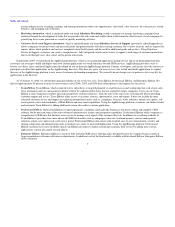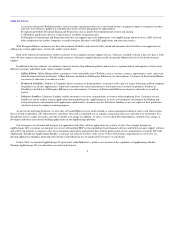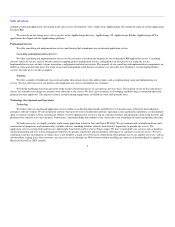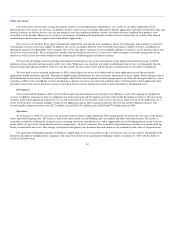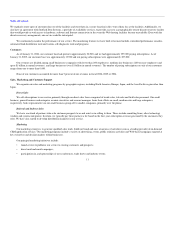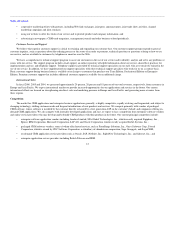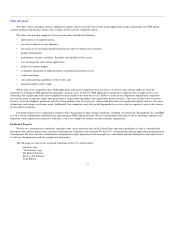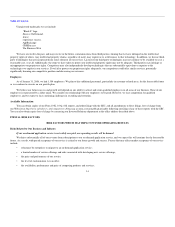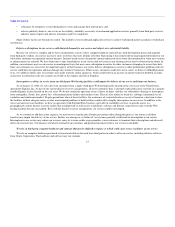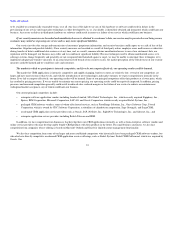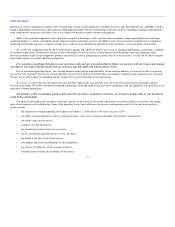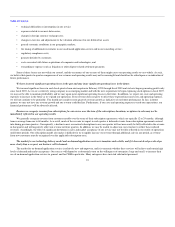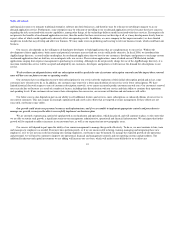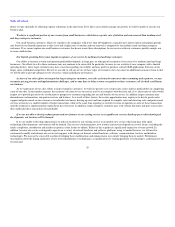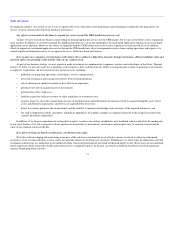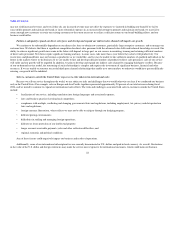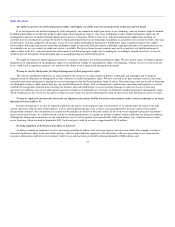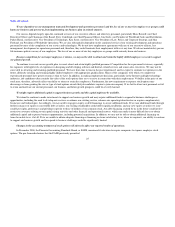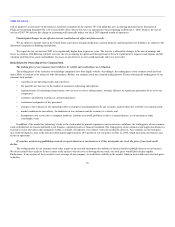Salesforce.com 2005 Annual Report Download - page 20
Download and view the complete annual report
Please find page 20 of the 2005 Salesforce.com annual report below. You can navigate through the pages in the report by either clicking on the pages listed below, or by using the keyword search tool below to find specific information within the annual report.
Table of Contents
professional services organization competes with a broad range of large systems integrators, including Accenture Ltd., BearingPoint, Inc. and IBM, as well as
smaller independent consulting firms specializing in CRM implementations. We have relationships with many of these consulting companies and frequently
work cooperatively on projects with them, even as we compete for business in other customer engagements.
Many of our potential competitors enjoy substantial competitive advantages, such as greater name recognition, longer operating histories and larger
marketing budgets, as well as substantially greater financial, technical and other resources. In addition, many of our potential competitors have established
marketing relationships and access to larger customer bases, and have major distribution agreements with consultants, system integrators and resellers.
As a result, our competitors may be able to respond more quickly and effectively than we can to new or changing opportunities, technologies, standards
or customer requirements. Furthermore, because of these advantages, even if our service is more effective than the products that our competitors offer,
potential customers might accept competitive products and services in lieu of purchasing our service. For all of these reasons, we may not be able to compete
successfully against our current and future competitors.
If we experience significant fluctuations in our operating results and rate of growth and fail to balance our expenses with our revenue and earnings
expectations, our results would be harmed and our stock price may fall rapidly and without advance notice.
Due to our limited operating history, our evolving business model and the unpredictability of our emerging industry, we may not be able to accurately
forecast our rate of growth. We base our current and future expense levels and our investment plans on estimates of future revenue and future rate of growth.
We may not be able to adjust our spending quickly enough if our revenue falls short of our expectations.
As a result, we expect that our operating results may fluctuate significantly on a quarterly basis. Revenue growth may not be sustainable and may
decrease in the future. We believe that period-to-period comparisons of our operating results may not be meaningful, and you should not rely upon them as an
indication of future performance.
Our quarterly results can fluctuate and if we fail to meet the expectations of analysts or investors, our stock price and the value of your investment
could decline substantially.
Our quarterly operating results are likely to fluctuate, and if we fail to meet or exceed the expectations of securities analysts or investors, the trading
price of our common stock could decline. Some of the important factors that could cause our revenues and operating results to fluctuate from quarter to
quarter include:
• the requirement to begin expensing stock options on February 1, 2006, which is the start of our fiscal 2007;
• our ability to retain and increase sales to existing customers, attract new customers and satisfy our customers' requirements;
• the renewal rates for our service;
• changes in our pricing policies;
• the introduction of new features to our service;
• the rate of expansion and effectiveness of our sales force;
• the length of the sales cycle for our service;
• new product and service introductions by our competitors;
• our success in selling our service to large enterprises;
• variations in the revenue mix of editions of our service;
17


